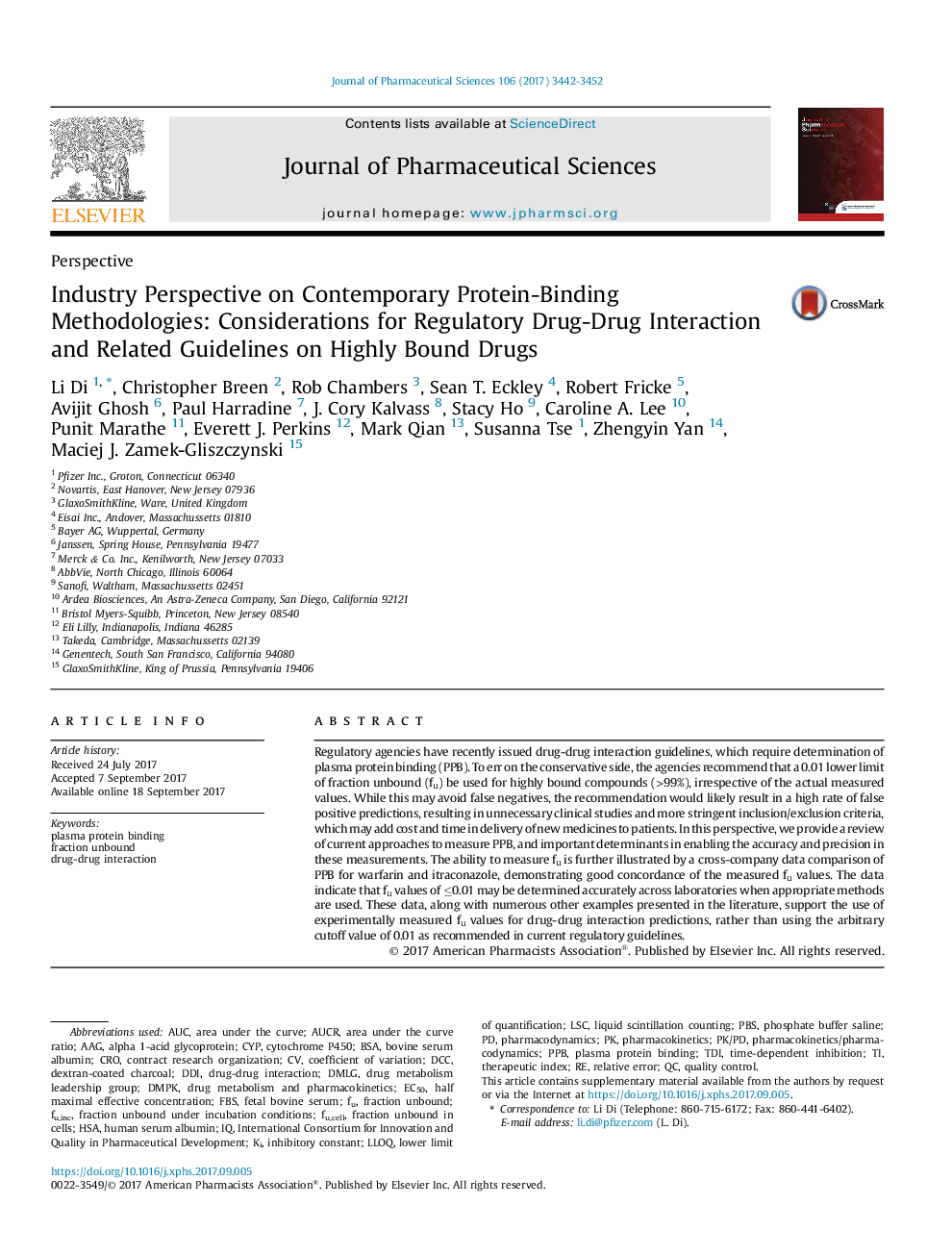| Article ID | Journal | Published Year | Pages | File Type |
|---|---|---|---|---|
| 8513625 | Journal of Pharmaceutical Sciences | 2017 | 11 Pages |
Abstract
Regulatory agencies have recently issued drug-drug interaction guidelines, which require determination of plasma protein binding (PPB). To err on the conservative side, the agencies recommend that a 0.01 lower limit of fraction unbound (fu) be used for highly bound compounds (>99%), irrespective of the actual measured values. While this may avoid false negatives, the recommendation would likely result in a high rate of false positive predictions, resulting in unnecessary clinical studies and more stringent inclusion/exclusion criteria, which may add cost and time in delivery of new medicines to patients. In this perspective, we provide a review of current approaches to measure PPB, and important determinants in enabling the accuracy and precision in these measurements. The ability to measure fu is further illustrated by a cross-company data comparison of PPB for warfarin and itraconazole, demonstrating good concordance of the measured fu values. The data indicate that fu values of â¤0.01 may be determined accurately across laboratories when appropriate methods are used. These data, along with numerous other examples presented in the literature, support the use of experimentally measured fu values for drug-drug interaction predictions, rather than using the arbitrary cutoff value of 0.01 as recommended in current regulatory guidelines.
Keywords
DMPKAAGDCCPBSTDIDDILSCppbFBSEC50LLOQCROHSAAUCRCyPAUCBSAPK/PDhuman serum albuminbovine serum albuminPlasma protein bindingdrug-drug interactionFraction unboundInhibitory constantlower limit of quantificationrelative errordextran-coated charcoalContract research organizationfetal bovine serumCytochrome P450therapeutic indexliquid scintillation countingCoefficient of VariationPharmacodynamicsPharmacokineticsPharmacokinetics/pharmacodynamicsphosphate buffer salinedrug metabolism and pharmacokineticsarea under the curveTime-dependent inhibitionhalf maximal effective concentrationquality controlalpha 1-acid glycoprotein
Related Topics
Health Sciences
Pharmacology, Toxicology and Pharmaceutical Science
Drug Discovery
Authors
Li Di, Christopher Breen, Rob Chambers, Sean T. Eckley, Robert Fricke, Avijit Ghosh, Paul Harradine, J. Cory Kalvass, Stacy Ho, Caroline A. Lee, Punit Marathe, Everett J. Perkins, Mark Qian, Susanna Tse, Zhengyin Yan, Maciej J. Zamek-Gliszczynski,
